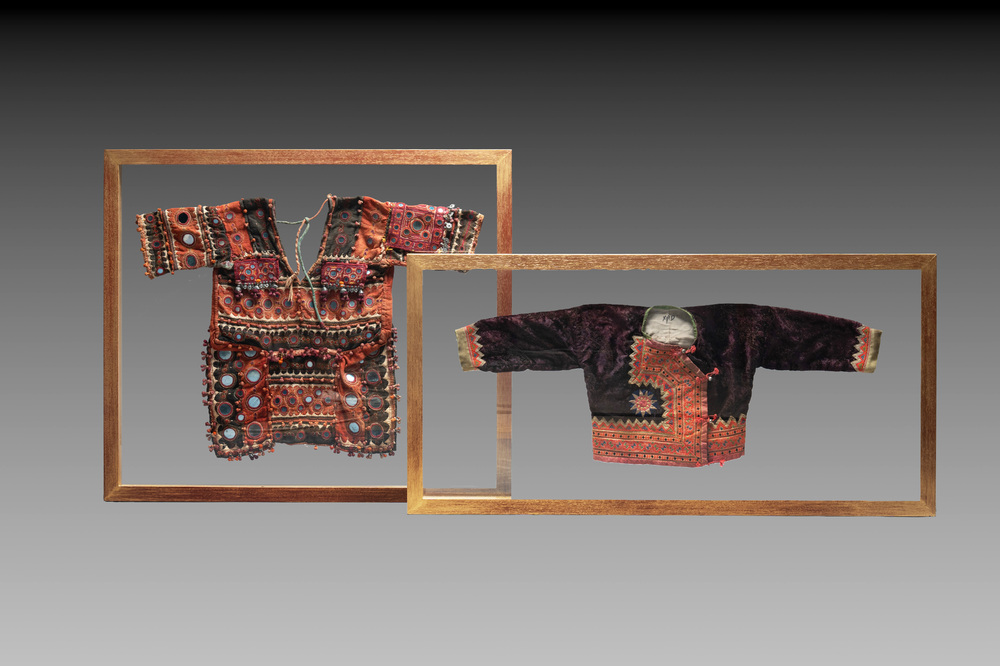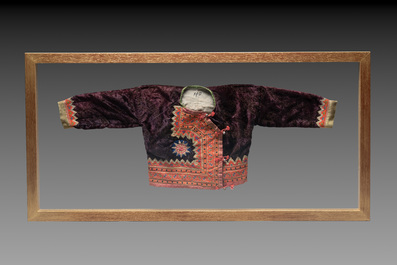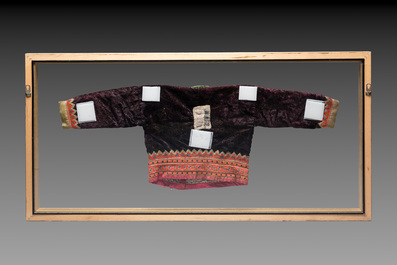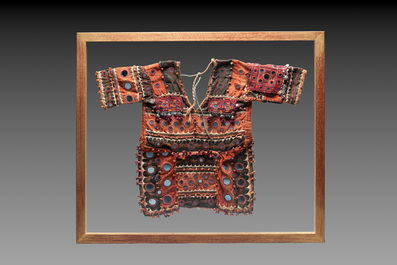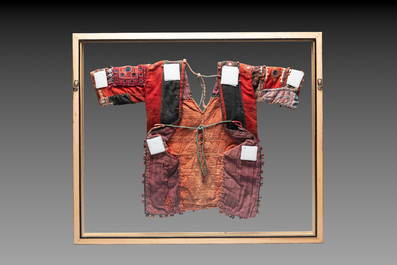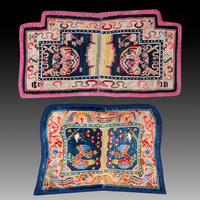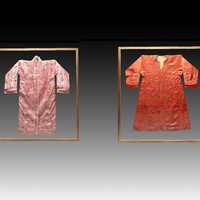We have to double-check your registration and make sure this is not an automated entry in our system. Please complete the test below...
Two Banjara blouses, India, 20th C.
Dim.: 49 x 99 (the frame)
Dim.: 29,5 x 79 cm (the robe)
Dim.: 69,5 x 80 cm (the frame)
Dim.: 51 x 68 cm (the robe)
The Gor people typically refer to themselves as Banjaras, while outsiders call them Kor, though this terminology is not used beyond their own community. A related term, Gor Mati or Gormati, means 'own people.' According to Motiraj Rathod, the community became known as Banjara around the 14th century AD, and prior to that, they were associated with the Laman, who claim a 3,000-year history.
Historian Irfan Habib suggests that the term Banjara originates from the Sanskrit words vanij, vanik, or banik, similar to the name of the Bania caste, historically India’s dominant trading community. However, B. G. Halbar argues that Banjara is derived from the Sanskrit vana chara, meaning 'forest wanderer'.
The group is known by various names across India, including Gor Banjara, Baladiya, Gor, Gour Rajput, Rajput Banjara, Ladaniya, Labana, and Nayak, among others. Despite adopting multiple languages, the term Banjara is widely recognized throughout India, though in Karnataka, it is modified to Banijagaru. A 1968 survey by the All India Banjara Seva Sangh, a caste association, recorded 27 synonyms and 17 subgroups for the community.
Ref.: Museum of International Folk Art, IFAF Collection, object no. FA.1989.48.9, for a similar example. (link)
